 W
WCarl Christopher Georg Andræ was a Danish politician and mathematician. From 1842 until 1854, he was professor of mathematics and mechanics at the national military college. He was elected to the Royal Danish Academy of Sciences and Letters in 1853. Andræ was by royal appointment a member of the 1848 Danish Constituent Assembly. In 1854, he became Finance Minister in the Cabinet of Bang before also becoming Council President of Denmark 1856-1857 as leader of the Cabinet of Andræ. After being replaced as Council President by Carl Christian Hall in 1857 Andræ continued as Finance Minister in the Cabinet of Hall I until 1858. Being an individualist he, after the defeat of the National Liberals, never formally joined any political group but remained for the rest of his life a sceptical de facto conservative spectator of the Constitutional Struggle.
 W
WThomas Bartholin was a Danish physician, mathematician, and theologian. He is best known for his work in the discovery of the lymphatic system in humans and for his advancements of the theory of refrigeration anesthesia, being the first to describe it scientifically.
 W
WThomas Clausen was a Danish mathematician and astronomer.
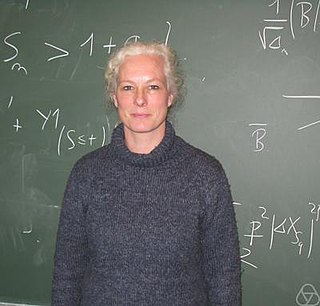 W
WSusanne Ditlevsen is a Danish mathematician and statistician, interested in mathematical biology, perception, dynamical systems, and statistical modeling of biological systems. She is a professor in the Department of Mathematical Sciences of the University of Copenhagen, where she heads the section of statistics and probability theory.
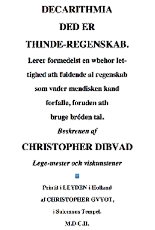 W
WChristoffer Dybvad (1578–1622) was a Danish mathematician. He was born in Copenhagen, the son of Professor Jørgen Dybvad.
 W
WMoritz Werner Fenchel was a mathematician known for his contributions to geometry and to optimization theory. Fenchel established the basic results of convex analysis and nonlinear optimization theory which would, in time, serve as the foundation for nonlinear programming. A German-born Jew and early refugee from Nazi suppression of intellectuals, Fenchel lived most of his life in Denmark. Fenchel's monographs and lecture notes are considered influential.
 W
WThomas Fincke was a Danish mathematician and physicist, and a professor at the University of Copenhagen for more than 60 years.
 W
WBent Fuglede is a Danish mathematician and, since 1992, retired professor (emeritus) from University of Copenhagen.
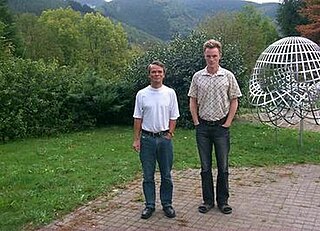 W
WSøren Galatius is a Danish mathematician who works as a professor of mathematics at the University of Copenhagen. He works in algebraic topology, where his "most striking result" concerns the homology of the automorphisms of free groups.
 W
WJørgen Pedersen Gram was a Danish actuary and mathematician who was born in Nustrup, Duchy of Schleswig, Denmark and died in Copenhagen, Denmark.
 W
WUffe Valentin Haagerup was a mathematician from Denmark.
 W
WPeter Andreas Hansen was a Danish-born German astronomer.
 W
WPoul Heegaard was a Danish mathematician active in the field of topology. His 1898 thesis introduced a concept now called the Heegaard splitting of a 3-manifold. Heegaard's ideas allowed him to make a careful critique of work of Henri Poincaré. Poincaré had overlooked the possibility of the appearance of torsion in the homology groups of a space.
 W
WInge Biehl Henningsen is a Danish statistician, academic and writer. A former researcher and lecturer at the universities of Copenhagen and Aarhus, she has also been active in politics and women's rights, most recently in connection with the PISA approach to student assessment. As editor of the socialist journal Naturkampen in the 1980s, she covered subjects as varied as the management of cancer research and the European Union's approach to agriculture in the third world.
 W
WJan S. Hesthaven is a Danish mathematician, currently Dean of the School of Basic Sciences with the responsibility for the Institutes of Mathematics, Physics, and Chemistry at EPFL. He is Professor of Mathematics, holds the Chair of Computational Mathematics and Simulation Science (MCSS), and was appointed Vice President for Academic Affairs at EPFL. He is particularly known for contributions to the development, analysis and application of high-order accurate computational methods for time-dependent partial differential equations. He has also contributed substantially to the development of reduced order models and the application of neural networks and machine learning techniques to problems in science and engineering.
 W
WPeder [Nielsen] Horrebow (Horrebov) was a Danish astronomer. Born in Løgstør, Jutland to a poor family of fishermen, Horrebow entered the University of Copenhagen in 1703. He worked his way through grammar school and university by virtue of his technical knowledge: he repaired mechanical and musical instruments and cut seals. He received his MA from the university in 1716, and his MD in 1725. From 1703 to 1707, he served as an assistant to Ole Rømer and lived in Rømer's home. He worked as a household tutor from 1707 to 1711 to a Danish baron, and entered the governmental bureaucracy as an excise writer in 1711.
 W
WJohan Ludwig William Valdemar Jensen, mostly known as Johan Jensen, was a Danish mathematician and engineer. He was the president of the Danish Mathematical Society from 1892 to 1903.
 W
WBørge Christian Jessen was a Danish mathematician best known for his work in analysis, specifically on the Riemann zeta function, and in geometry, specifically on Hilbert's third problem.
 W
WChristian Sophus Juel was a Danish mathematician, specializing in geometry.
 W
WTinne Hoff Kjeldsen is a Danish mathematician who works in the Department of Science, Systems and Models (IMFUFA) at Roskilde University, and in the Department of Science Education at the University of Copenhagen. Her research interests include the philosophy of mathematics, history of mathematics, and mathematics education.
 W
WPeter Landrock is a Danish cryptographer and mathematician. He is known for his contributions to data encryption methods and codes. Landrock has been active since the 1970s as research scientist and faculty member for Cambridge University and the University of Aarhus and others, and was active for Microsoft and Cryptomathic. He has been visiting professor at Oxford University, Leuven University and Princeton University.
 W
WLudvig Valentin Lorenz was a Danish physicist and mathematician. He developed mathematical formulae to describe phenomena such as the relation between the refraction of light and the density of a pure transparent substance, and the relation between a metal's electrical and thermal conductivity and temperature.
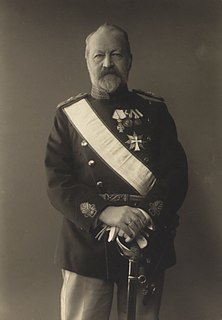 W
WVilhelm Herman Oluf Madsen was a Danish politician, minister, army officer, businessman and inventor. He was War Minister in the Deuntzer Cabinet 1901–1905. Madsen was the father of the physician Thorvald Madsen.
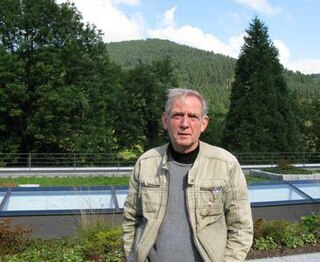 W
WIb Henning Madsen is a Danish mathematician, a professor of mathematics at the University of Copenhagen. He is known for proving the Mumford conjecture on the cohomology of the stable mapping class group, and for developing topological cyclic homology theory.
 W
WJesper Møller is a Danish mathematician.
 W
WJakob Nielsen was a Danish mathematician known for his work on automorphisms of surfaces. He was born in the village Mjels on the island of Als in North Schleswig, in modern-day Denmark. His mother died when he was 3, and in 1900 he went to live with his aunt and was enrolled in the Realgymnasium. In 1907 he was expelled for membership to an illicit student club. Nevertheless, he matriculated at the University of Kiel in 1908.
 W
WNiels Nielsen was a Danish mathematician who specialised in mathematical analysis.
 W
WNiels Erik Nørlund was a Danish mathematician.
 W
WJulius Peter Christian Petersen was a Danish mathematician. His contributions to the field of mathematics led to the birth of graph theory.
 W
WThorvald Nicolai Thiele was a Danish astronomer and director of the Copenhagen Observatory. He was also an actuary and mathematician, most notable for his work in statistics, interpolation and the three-body problem.
 W
WGeorg Frederik Ursin was a Danish mathematician and astronomer.
 W
WHieronymus Georg Zeuthen was a Danish mathematician.